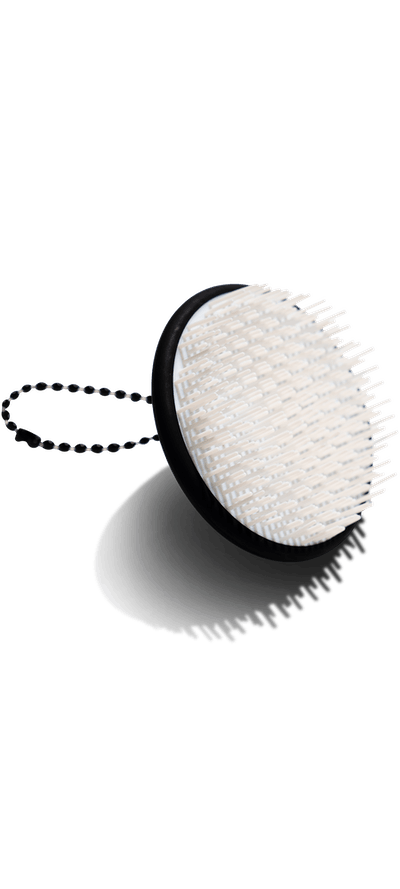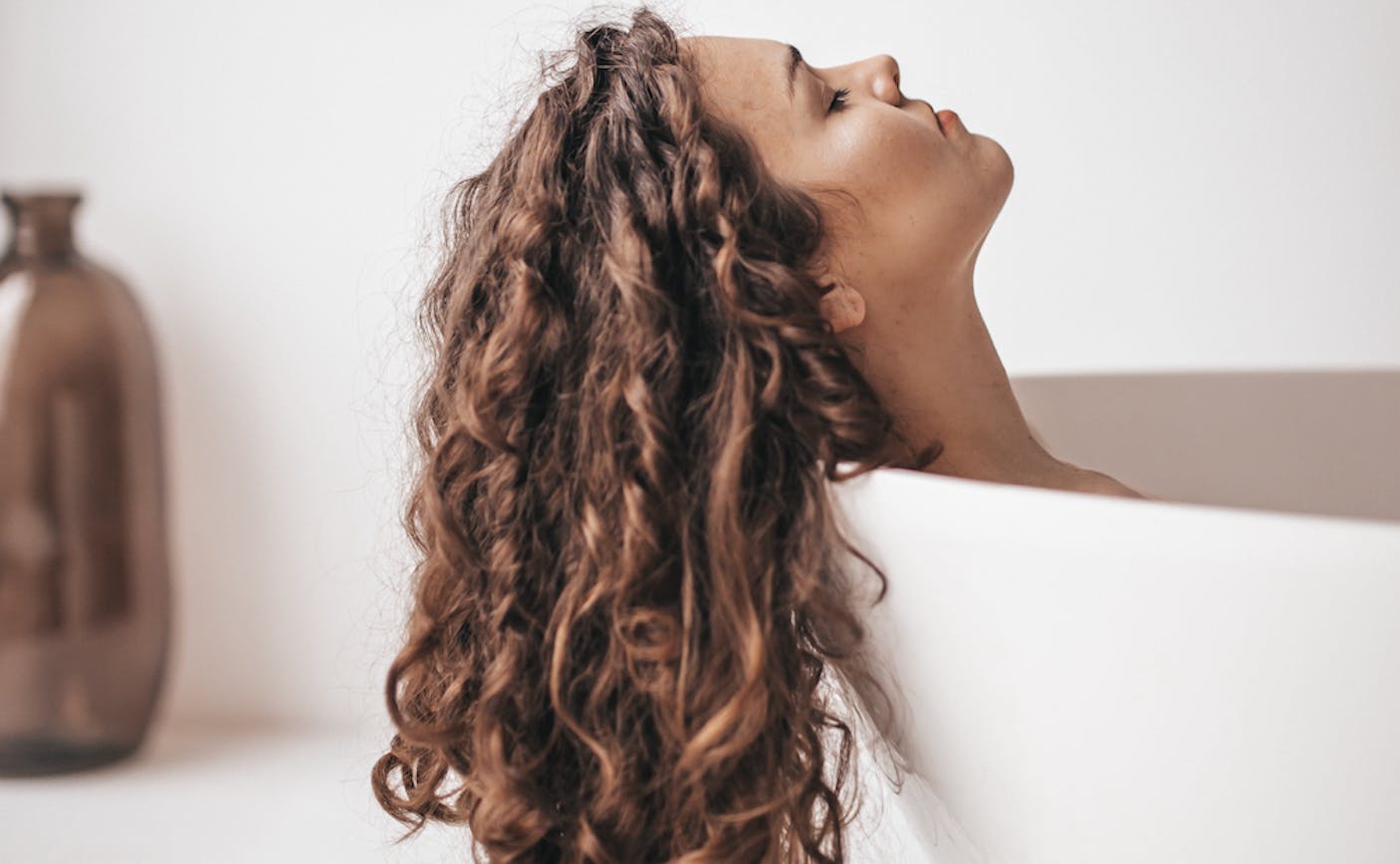#MakeMillionsMoreConfident with Strong Girls United
#MakeMillionsMoreConfident with Strong Girls United
As we get older, our hair goes through some pretty dramatic changes. Some of these changes are environmental and genetic but our hair also undergoes some radical transformations with age.
Sometimes those changes include hair loss. While hair loss is normal, especially among men, the reality can be frustrating and scary. Most people attach at least some meaning to their appearance, and seeing something so visible fade away can be tough.
Aisles upon aisles of products can help slow or reverse the effects of hair loss, but one you may not be aware of is a scalp brush. That’s right, you don’t necessarily need to take a pill or get a hair transplant to foster new hair growth — you may just need to incorporate a head massage into your daily routine.
Keep reading to see if a scalp brush could become your head’s new best friend.
Why Does Hair Loss Happen?
The receding hairline, bald spots, thin strands...hair loss looks different for everyone.
Some of the most common experiences of hair loss start as a gradual process. Over time, especially with age, many people see their hair become thinner and more sparse. Men often see their forehead get extended past their original hairline, and women can see thinning around the part in the hair.
For others, hair loss can start with patches on the back of their heads or with the sudden loss of hair, typically after a trauma or medical treatment. If you’ve ever had the unsettling experience in the shower of pulling out a clump of your hair, you know just how jarring that can be.
So why does hair loss happen? The answer is different for everyone. Here are the most common reasons why, according to the Mayo Clinic.
Genetics: This is the most common cause for standard hair loss. If your parents experienced hair loss in their old age, it’s considerably more likely that you will as well. This type of loss is called androgenic alopecia, also known as male-patterned baldness or female-patterned baldness.
Hormonal Changes: Some people experience hair loss during a hormonal change like pregnancy, menopause, or when they’re having issues with their thyroid. Certain medical conditions can also lead to hair loss, like alopecia, trichotillomania (disordered hair-pulling behavior), or infection.
Medical Treatment: Some cancer patients lose their hair from radiation or chemotherapy treatments. Certain pharmaceutical drugs can also have these side effects.
Trauma: Some people see sudden hair loss after experiencing a shocking or harmful event, though this is typically temporary.
Styling and Cosmetic Treatment: Pigtails, though adorable, can be tied to hair loss when used excessively. Basically, any style that pulls hair tight, like braids or ponytails, can have that effect for some people. Some damaging treatments have also been linked to hair loss, like hot oil.
Itching and Irritation: While dandruff itself won’t cause hair loss, excessive scratching associated with scalp discomfort and flaking can. Regularly pulling and clawing at your scalp can lead to damaged hair follicles that produce weaker hair.
If you’ve experienced any of the above and are seeing hair loss, you may have just identified your culprit. Still, the question remains — what can you do about it?
What’s a Scalp Brush?
Let’s start with the basics. A scalp brush is similar to a normal hairbrush but different in a few key ways. Scalp brushes are typically designed to be held in your palm. Their primary goal is not to untangle your hair, though they’re also effective at that, but to massage and exfoliate your scalp.
Scalp brushes are made with flexible, typically silicone bristles that gently rub against your head. If you use a scalp brush while showering, they will work the shampoo into your roots, making for a more effective cleanse.
What’s more, scalp brushes are effective exfoliators, clearing away build-up on the scalp, whether it’s due to excess product, dandruff, or dry scalp-related flaking.
And last but not least, we can’t help but mention that it feels fantastic. There is nothing better than a head massage, and scalp brushes provide that signature, satisfying feeling you get during a hair salon appointment.
How Can a Scalp Brush Help With Hair Loss?
Scientists are always hard at work on new treatments for hair loss. You’d think a problem this common would have a simple solution by now. As the causes for hair loss are so varied, so too are its remedies.
We definitely recommend doing your research and experimenting to find the proper routine for you. That said, we also recommend that a scalp brush jumps to the top of your shopping cart.
It may be surprising, but regular scalp massages have actually been linked to thickening hair growth. While research on this topic is still growing, the early findings are encouraging and certainly support making a scalp brush a part of your regular routine.
One 2016 study found that Japanese men who received daily, four-minute head massages for 24 weeks, saw thicker hair growth as a result. The gentle massage at their hair follicles actually caused the genetic expression of new hair to change, producing thicker hair strands.
In addition to providing a head massage, scalp brushes also exfoliate and circulate blood flow to the area, which may help promote the growth of new hair and skin.
While scientific consensus is still developing, that’s certainly a promising start. And let’s be honest, do we really need more reasons to regularly massage our heads?
It may be surprising, but regular scalp massages have actually been linked to thickening hair growth.
How do I Use a Scalp Brush?
If you’re ready to start taking advantage of the many benefits of scalp brushing, we certainly cannot blame you. Once you have a scalp brush in hand, there are a couple of ways to use it.
Dry Brushing
Have you ever heard of dry brushing your skin? Many people swear by this method, brushing the skin on their bodies with a coarse fibrous brush. The general idea is to do it right before you shower, to clear away dead skin cells and bring blood flow to your skin. This, in turn, is thought to promote new skin cells to form.
The same principle applies to scalp brushes. If you’re looking to exfoliate and clear away build-up from your scalp, using the brush on dry hair is your best bet. We recommend doing it for five minutes before you shower. You’ll be surprised at how effective a tool this can be in clearing your head of build-up so you can get the most out of your cleanser.
While Showering
Another option is to use a scalp brush in the shower. We recommend doing this while you’re shampooing, so the brush can help you maximize the product’s benefits, working it deeply into your roots. Bonus? This feels amazing.
In addition to all the hair loss benefits we mentioned above, a relaxing head massage like this can also help reduce your anxiety and tension.
In both cases, you’ll want to gently rub the brush against your scalp from front-to-back in a circular motion. Generally, two to three times a week is plenty. Consider lining up your scalp brush routine with your wash day routine, which can vary depending on your hair type and if your scalp is more oily or dry.
One call out here — don’t use a scalp brush if you’re experiencing irritation, sensitivity or broken skin on your head. Further irritating an already inflamed area can be painful. As always, listen to your body and talk to your doctor when irritation or pain doesn’t go away on its own.
Where Can I Find a Scalp Brush?
Scalp brushes are everywhere these days, with the internet very much caught on to their many incredible effects. You can research to find one that suits your needs and price point, but we’re, of course, big fans of our Scalp Brush.
It’s a simple but effective tool that you can hang in your shower for regular exfoliation and massage.
Ready to Start Treating Hair Loss with a Scalp Brush?
Hair loss can be embarrassing and frustrating, especially when it happens suddenly or early. The good news is that the hair care industry is hard at work, coming up with new solutions and treatments that will restore and fortify your hair strands.
While we may not have all the answers now, we do have some promising solutions.
By stimulating blood flow and clearing away build-up, scalp brushes are the gentle, exhilarating tool your head may be missing. Consider bringing it into your hair routine to promote new, more robust hair growth.

Elevate your scalp care routine with our award-winning Scalp Brush. Designed with gentle yet effective silicone bristles, it stimulates circulation, removes buildup, and enhances the absorption of your favorite scalp treatments—all while giving you a soothing, spa-like experience.

































